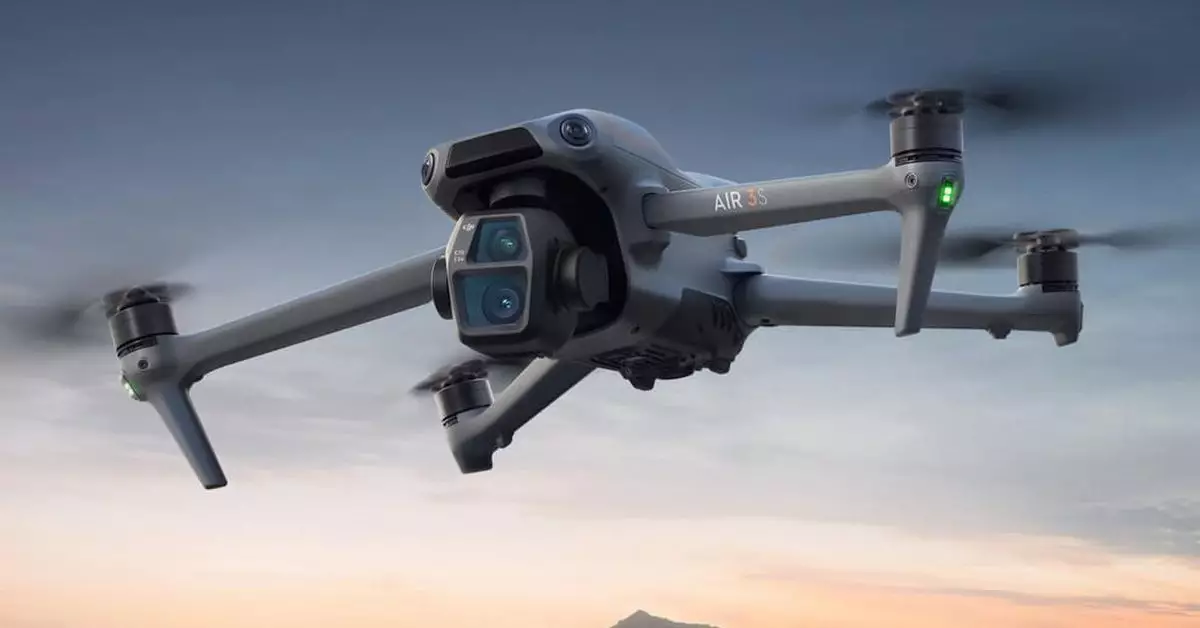The ongoing tension between technology companies and government regulations has taken a new turn with DJI, a leading drone manufacturer, finding itself ensnared in import restrictions that significantly affect its flagship model, the Air 3S. The situation underscores the complex interplay between international trade, national security, and technological advancement, raising important questions about the future of consumer electronics in a geopolitically charged environment.
DJI’s announcement that the Air 3S won’t be available for retail in the United States due to import limitations is a significant blow to a company that has positioned itself at the forefront of drone innovation. The crux of the issue lies not in any embargo against DJI drones, but in what the company perceives as heightened scrutiny from the Department of Homeland Security (DHS) regarding the origins of products, particularly those manufactured in China. This scrutiny has been intensified by growing concerns about forced labor practices documented in regions like Xinjiang, home to the Uyghur population.
According to DJI, US Customs and Border Protection (CBP) has invoked the Uyghur Forced Labor Prevention Act (UFLPA) to block its drone imports. The implications of this act are quite serious, considering it is aimed at preventing goods produced under coercive labor conditions from entering the US market. In a letter sent to its distributors, DJI insists that it does not use forced labor in its supply chain, reiterating that all manufacturing occurs either in Shenzhen or Malaysia.
DJI’s proactive measures to combat these restrictions include sending documentation to US Customs to validate its compliance with US laws surrounding labor practices. The company insists on maintaining transparency and calls the situation a “misunderstanding.” They seek to assure their customers and distributors that the integrity of their supply chain has been auditable and that no components come from the Xinjiang region, where intensive scrutiny over labor practices is prevalent.
Amidst these claims, it raises an important discussion about the effectiveness of DJI’s crisis communication strategy. The reliance on self-assertions without independent verification might not suffice in the face of government scrutiny. Given that DJI was previously included in the Department of Commerce’s Entity List links, the credibility of its present statements could indeed appear compromised.
The political landscape surrounding DJI is also complex. The House of Representatives passed legislation that could effectively ban DJI drones, but such measures require Senate approval as well. Interestingly, in the Senate’s latest version of the National Defense Authorization Act, the ban was omitted but was later reintroduced as an amendment, suggesting ongoing contention regarding DJI’s operational presence in the United States.
This current discord reflects broader concerns about national security, tech sovereignty, and the potential ramifications of allowing foreign entities access to American markets. While DJI asserts that the customs issue primarily impacts enterprise and agricultural drones, the ripple effects threaten its consumer product line, particularly the innovative Air 3S, and most disturbingly, the availability of advanced drone technology to everyday consumers.
As DJI navigates this fraught situation, it must work swiftly to resolve its import problems to avoid further alienating US consumers and distributors. The potential ban could have lasting effects, particularly if it paves the way for a more extensive reform of how technology companies operate in a US context. Current owners of DJI products might continue to use their drones, yet a ban on imports would significantly curtail the availability of new models and replacements. Furthermore, if the FCC ceases to authorize DJI’s radio-operated devices, it will only exacerbate the challenges the company faces in maintaining its market share.
Ultimately, the fallout from DJI’s import restrictions will likely serve as a litmus test for how tech companies manage cross-border relations and regulatory compliance amidst tightening national security considerations. In a digital age where innovation is nimble, the responses from both the government and private entities will shape the future of consumer technology, all while keeping the eyes of stakeholders keenly focused on compliance, ethics, and supply chain integrity.


Leave a Reply